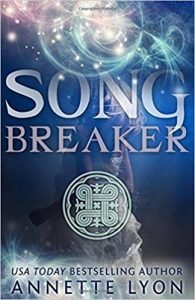Sounds: Bringing Back the Often-Forgotten Sense
 Arguably, the most common advice to new writers may be “show, don’t tell,” and “use sensory details.”
Arguably, the most common advice to new writers may be “show, don’t tell,” and “use sensory details.”
Most of us do well using the sense of sight—after all, we must describe what’s going on for the story to make sense. When we’re trying, we may add a taste a smell, but all too often, the sense of hearing gets ignored.
Yet adding sounds can create the exact mood and lens your story needs. Here are ways to effectively use sound in your writing:
Metaphor and Simile
A great way to reveal character is to have them hear a distinct sound and then compare it to something that comes from their individual frame of reference.
Imagine that your character hears what turns out to be a car crash from a distance.
A ten-year-old boy might think it sounds like the video game at his best friend’s house—the one his parents won’t let him get.
A veterinarian might think the screeching of metal sounds like the cries of dogs in pain—a heartbreaking sound she’s heard many times.
A new widow might recognize the sounds of shattering glass and crunching metal that took her husband’s life. To her, they’re the sounds of death and loss.
An old mechanic can tell based on the sounds that the accident involved a large vehicle like a dump truck and a smaller one, like a sedan.
In each case, the characters hear the same sounds, but their metaphors and similes—the comparisons they use—are different. They reveal personality, age, life experience, and more.
Onomatopoeia
This is when a word sounds like the thing it means. A few examples:
- CRUNCH (Sounds like a yummy snack.)
- THUD (A door closes. A candlestick falls to the floor.)
- SIZZLE (Mmm. Bacon.)
- CLACK (Typewriter keys!)
Onomatopoeia can be useful in several ways, but is especially powerful as a verb, because it gives the punch of multiple senses at the same time.
On the way home from work, Sarah, SPLASHED in rain puddles like a child.
We can picture what she’s doing (sight), but we also hear her boots smacking the water (sound), which then flies all over. We may also sense Sarah getting wet (touch). That’s three senses with one word!
Slipping onomatopoeia into your work is easy to do, but tread carefully. As with any technique, there’s a right way and a wrong way to do it.
Speech Tags Beware
Dialogue should be able to convey tone without onomatopoeia verbs in speech tags, which inevitably stand out (in a bad way!)
“You’ll pay for this,” Pete snarled.
If we really need a clarifying word like snarled, fine. But don’t use onomatopoeias in many speech tags. More than a few in a manuscript telegraphs an amateur.
Are you committed to using an onomatopoeia? Avoid putting it in a speech tag by putting it into an action. For example, Pete could snarl right before he speaks. The same holds true for other potential onomatopoeic verbs, like groaned, shrieked, and whistled.
Personification
Personification is where you give an inanimate object human (or animal) traits. Personifying a sound immediately deepens both tone and mood.
Sure the wind could blow, but all wind blows. What if the wind in your scene whispers or cries? Instead of a train shaking a passenger to sleep, you could have the train hum or purr.
The Right Sounds for the Right Moods
What sounds would you use to describe a cemetery at twilight?
Trick question! The sounds you decide to use will determine the mood of the scene, so before you can make that call, you need to know the tone the scene needs to convey. You also need to know your POV character because they determine what sounds get noticed and how they react to each one.
Your genre may decide some of this for you. Chances are good that a Nicholas Sparks hero would hear very different sounds in a graveyard from those heard by a Stephen King character!
Focus on Less-Obvious Sounds
When I teach descriptive writing and ask for sounds in hospitals, the first one suggested is always beeping machines. That’s a perfectly fine detail, but it’s also the most obvious one. Make a list of sounds that will likely be in the place your scene is located. Cross off the first several—the ones everyone will think of. Use the fresh, original ones at the end of your list.
For a hospital, others sounds could be the squeak of someone’s shoes, the sound of a cap taken off a syringe, or automatic blood-pressure cuffs inflating. If your story in with medical professionals, we could learn what a scalpel cutting through flesh, or an intubation, sounds like. On the lighter side, does a surgeon like to operate while listening to Bon Jovi? The possibilities are almost endless.
—
Next time you hear “show, don’t tell,” take a step back from sight and smells to consider sounds. Pick the freshest and most vivid ones that both set the scene and show character. You may not keep every sound you play with—and probably shouldn’t. Trying to find the right ones will still be a good exercise and a powerful reminder that sound can often be one of the best overlooked tools in your writer’s arsenal.
—
Annette Lyon is a USA Today bestselling author, a 5-time Best of State medalist for novels and short stories in Utah, and a Whitney Award winner. She’s had success as a professional editor and in newspaper, magazine, and technical writing, but her first love has always been writing fiction. She’s a cum laude graduate from BYU with a degree in English and is the author of over a dozen books, including the Whitney Award-winning Band of Sisters, a chocolate cookbook, and a grammar guide. She is a regular contributor to and the former editor of the Timeless Romance Anthology series.
Annette is represented by Heather Karpas at ICM Partners.
FACEBOOK PAGE: https://www.facebook.com/annettelyon/
NEWSLETTER: http://bit.ly/1n3I87y
AMAZON AUTHOR PAGE: http://amzn.to/1ORZC0Q
TWITTER: https://twitter.com/AnnetteLyon
INSTAGRAM: https://www.instagram.com/annette.lyon/
BLOG: http://blog.annettelyon.com
PINTEREST: https://www.pinterest.com/annettelyon
About her latest novel SONG BREAKER
 Based on a Nordic myth in the Finnish Kalevala, which inspired Tolkien’s The Lord of the Rings and Gandalf himself, comes Song Breaker from a USA Today bestselling author.
Based on a Nordic myth in the Finnish Kalevala, which inspired Tolkien’s The Lord of the Rings and Gandalf himself, comes Song Breaker from a USA Today bestselling author.
To Aino, the idea of spending her life warming the bed of a wrinkled old man—especially when it means life without her secretly betrothed love—is horrifying. But that is the fate that awaits her because her brother, Jouko, has dueled the famed wizard Vane—and lost.
At the last moment, the old man agreed to spare Jouko’s life in exchange for Aino’s hand, and the contract is sealed with magic that cannot be undone by anyone but Vane himself.
Aino swears she’ll never marry against her will, yet with only two days until the wizard comes for her, she must find a way to break the deep magic of the contract, or she’ll be Vane’s prisoner for life. Her efforts might free her from the old wizard, but her escape could mean merely exchanging one kind of prison for another.
Category: Contemporary Women Writers, How To and Tips

























What a useful article. There are some really helpful examples here and I aim to take heed with future writing. Thanks for sharing these ideas.